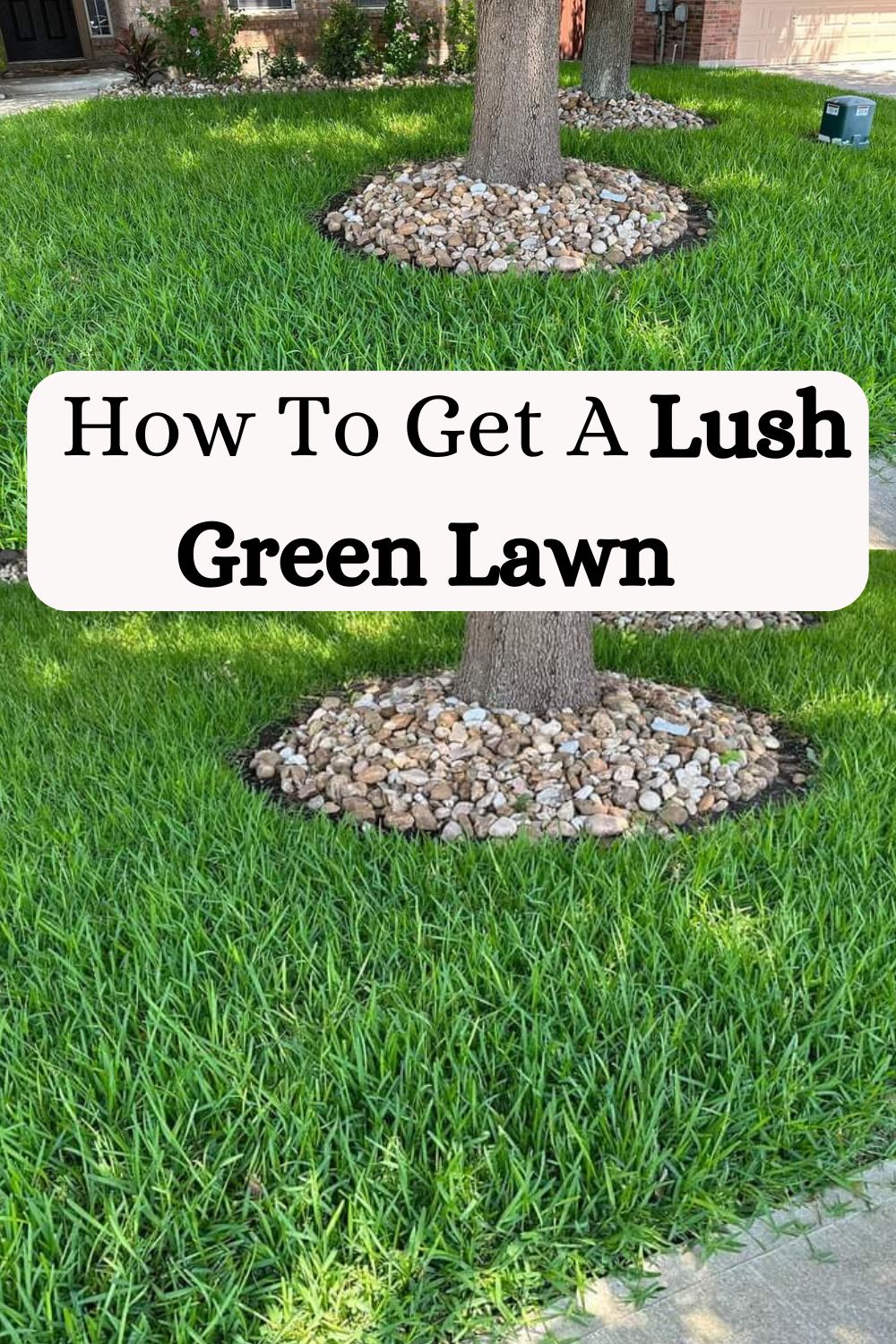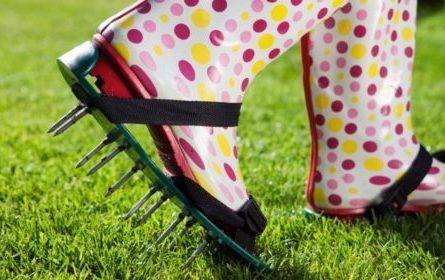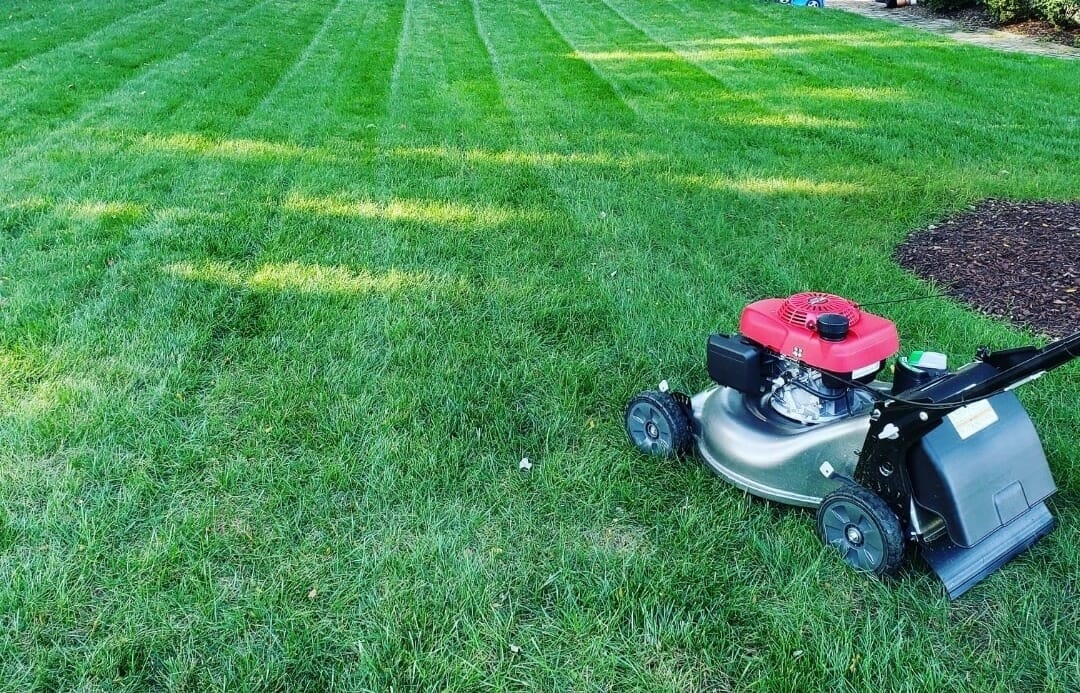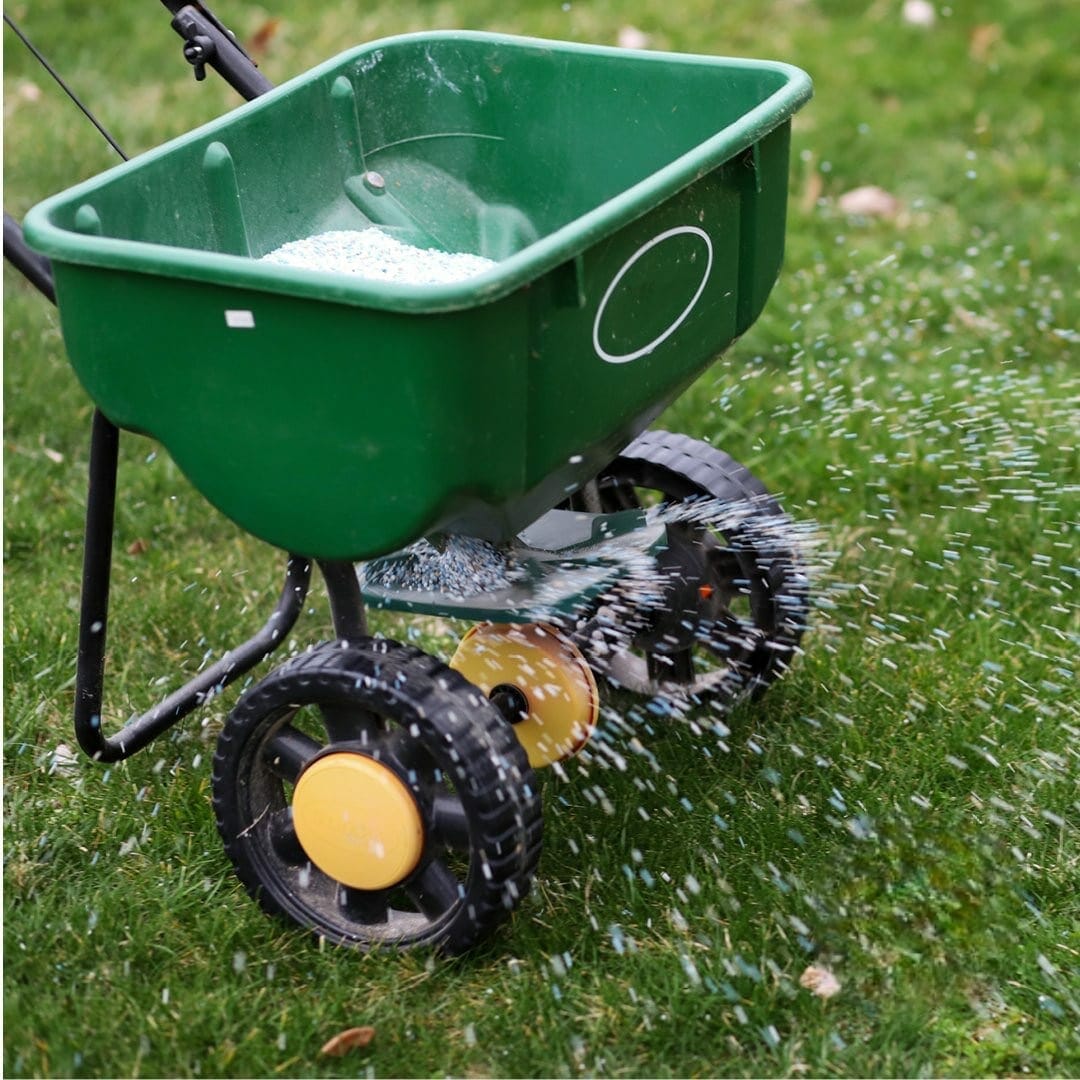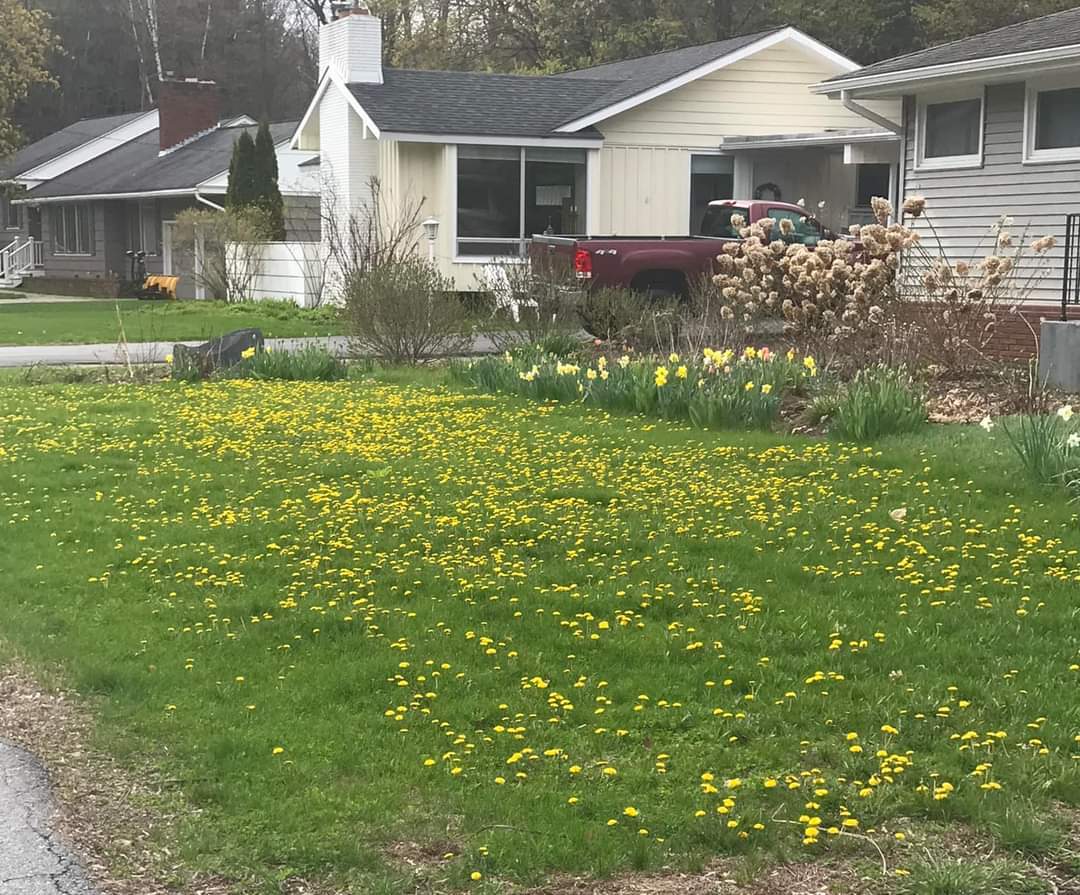Look into your lawn for a second, is your grass looking its best? Nothing beats a thick lush green lawn that feels comfortable on your feet and boosts the overall aesthetics of your home.
Perhaps your neighbor’s lawn looks excellent, and you would like yours also to look the part. Regardless of your motivations, the good news is you can naturally get a lush green lawn if you put effort.
How To Get A Lush Green Lawn Naturally
Here are essential tips to help you.
1. Test Your Lawn Soil
Start by testing your lawn soil; that will inform you what you need to add, introduce, and modify to make the soil conducive for grass growth. Soil testing provides information about the nutrient content of your lawn’s soil, including the levels of primary and secondary nutrients present.
With this information, you will know the fertilizers and soil amendments to add to promote healthy growth and prevent nutrient deficiencies or excesses.
Also, different grass types thrive in certain soil pH. For instance, most cool-season grasses prefer a slightly acidic pH of around 6.0 to 7.0, while warm-season grasses tend to thrive in a slightly acidic to neutral range of 6.0 to 7.5.
The good news is you can determine the soil pH and then, depending on the results, add sulfur to lower or lime to lower the pH.
In addition, test the soil to determine the texture and composition of your lawn’s soil to understand better the soil’s water-holding capacity, drainage characteristics, and susceptibility to compaction.
That way, you can make informed decisions on irrigation practices, aeration, and soil amendment recommendations.
2. Dethatch Your Lawn
Has it been 2 to 3 years since you dethatched your lawn, or is the thatch layer over ½ inch thick? If so, it’s time to take out your thatching rake. Dethatching your lawn helps improve nutrient and water penetration, reduce the risk of pests and diseases, enhance air circulation and reduce moisture retention, promote overseeding and new growth, and enhance appearance.
Read More:
Knowing the benefits, when is the right time to dethatch? Do it during the lawn’s active growing season when it has time to recover and fill in any bare areas created during the process.
3. Aerate It
Your lawn will become compact at some point, perhaps from harsh weather or traffic, and you must do something about it because nutrients and water will have a hard time reaching the roots of the grass on compacted soil. So, to encourage the growth of a lush green lawn, aerate your lawn annually.
Apart from loosening the soil, aeration also promotes the growth of deeper roots and reduces thatch. It also complements other lawn care practices, such as overseeding and fertilization and improves the overall health of your lawn.
In terms of aerating tools, you can use a spike aerator to simply puncture the soil or a core aerator to remove small plugs of soil from the ground. However, core aeration is better because it provides more significant benefits by creating space for root growth and reducing soil compaction.
Aerate soil moist (ensure it’s not overly wet, though) and choose the right time (the grass type helps). For instance, aerate cool-season grass in early spring or fall. On the other hand, do it in early summer or late spring if you grew warm-season grass.
4. Mow Your Grass Correctly
There is much more to mowing the lawn than getting out your mower and cutting the grass. If you are not careful, you can do many wrong things that will harm your grass and keep you from achieving a lush green lawn. The question is, what’s the correct way of mowing a lawn?
These guidelines will help.
- Don’t mow your grass too short (scalping), as it weakens the grass and promotes weed growth.
- To ensure you stick to the right height, mow cool-season grasses like Kentucky bluegrass and fescue at a height of 2.5 to 3.5 inches (6-9 cm). On the other hand, cut warm-season grasses like Bermuda grass and Zoysia slightly lower, around 1.5 to 2.5 inches (4-6 cm).
- Follow the “one-third rule.” Avoid taking out over one-third of the blades of the grass at a time because it stresses the grass and weakens your lawn.
- Dull mower blades don’t make clean cuts but rather tear the grass, resulting in a ragged appearance and increasing the risk of disease. Therefore, sharpen your mower blades regularly, preferably at the beginning of each mowing season, to ensure a clean cut and promote healthy grass growth.
- Always cutting grass in one direction can lead to compacted soil and grass leaning in one direction. Fortunately, you can easily prevent this by varying the mowing pattern whenever you mow.
- Mow dry grass, preferably in the morning or early evening when the lawn is not exposed to the day’s heat. Remember that mowing wet grass can result in uneven cuts and clog the mower. Moreover, wet grass blades are more prone to tearing.
- Bagging the grass clippings will leave your lawn looking tidy after a cut. However, there are benefits to grasscycling (leaving the clippings on your lawn). Once the grass clippings decompose, they provide nutrients back to the soil.
Do you desire an impeccable lawn? Well, effort is required, and part of that means mowing your lawn regularly to avoid stressing the grass and keep it from becoming overgrown. Aim to mow often enough that you’re removing only the top 1/3 the length of blades of your grass.
5. Adopt The Best Watering Practices
You won’t get that lush green lawn you desire if you are not giving your yard sufficient water causing yellow blades and even dead grass. Conversely, watering too much can lead to rotting, so you must find a balance.
Water your grass sporadically and deeply for deeper roots. Aim to water the yard to a depth of 6 to 8 inches (15-20 cm) each time you irrigate. Additionally, water your lawn early before it gets too hot, ideally anywhere between 4:00 am to 9:00 am.
Distribute the water evenly across your lawn because uneven watering can result in dry patches or overwatered areas. You must also adjust the watering schedule according to the weather conditions and season, irrigating more frequently during hot and dry periods.
6. Fertilize Regularly
Grass needs nutritious soil to grow into a green, thick yard. Lawn soil typically has natural nutrients which support grass growth, but over time, these nutrients leach, leaving the lawn nutrient deficient. So, how can you remedy this issue and promote the growth of a lush lawn? Fertilization.
Organic options include compost, composted manure, and natural mineral fertilizers. Slow-release fertilizers are also effective. However, avoid over-fertilizing because it can stimulate too much growth and weaken your grass.
The soil type you conducted earlier will inform you of the nutrients your lawn needs, thus helping you choose the best fertilizer.
7. Keep Weeds Away From Your Lawn
Weeds can attack your lawn without you noticing, and if you don’t act, they can wreak havoc on it, stress your grass, and even make your yard unhealthy. Therefore, regularly inspect your lawn for weeds and remove them.
Get rid of weeds manually or use organic weed control methods, such as hand-pulling or opt for spot treatment with vinegar-based herbicides. Hand-pulling or digging out weeds is particularly useful for perennial weeds or when dealing with isolated weeds.
Note that maintaining a dense and healthy lawn through proper mowing, watering, and fertilizing helps reduce weed growth naturally. Also, avoid introducing weed seeds into your yard by preventing weed seeds from spreading by cleaning gardening tools, footwear, and equipment.
Additionally, be vigilant about removing any weeds before they generate seeds and spread.
8. Utilize Natural Pest Control
While synthetic chemicals are an effective option against pests, go for a more eco-friendly, safe approach- natural pest control. So, avoid using chemical pesticides unless absolutely necessary since they can harm beneficial insects and disrupt the natural balance of your lawn.
Implement IPM (Integrated Pest Management), which involves combining multiple pest control strategies for long-term pest management. This approach focuses on prevention, monitoring, and combining biological, cultural, chemical, and mechanical control methods as needed.
In order to keep pests away, the first line of defense is maintaining a healthy lawn. Also, encourage beneficial insects and natural predators that feed on pests to thrive in your yard. For instance, ladybugs, lacewings, ground beetles, and birds can help you control pests like aphids, grubs, and caterpillars.
Therefore, provide these beneficial creatures with habitat and food sources by incorporating diverse plants and creating a wildlife-friendly environment. This will entice them into sheltering in your yard.
You can also deter pests through companion planting techniques since some plants naturally repel certain pests or attract beneficial insects. For example, marigolds can deter nematodes, while plants like dill, fennel, and yarrow attract beneficial insects.
Final Remarks
Creating a lush green lawn is achievable. Individually, the above practices seem simple and easily attainable but are more tasking when combined. However, they are necessary. In that case, carefully plan lawn maintenance and care to avoid falling behind on your yard work.

Hey there, I’m Derek Schew, a writer for Lawnholic.com, where we cover everything and anything related to lawns. As someone who’s spent countless hours tending to my own lawn, I’m passionate about sharing my knowledge and helping others achieve the perfect yard. From lawn care tips to product reviews, I’m committed to providing our readers with the most accurate and up-to-date information available. So whether you’re a seasoned lawn enthusiast or just getting started, I invite you to join our community and discover the joys of a lush, green lawn.

